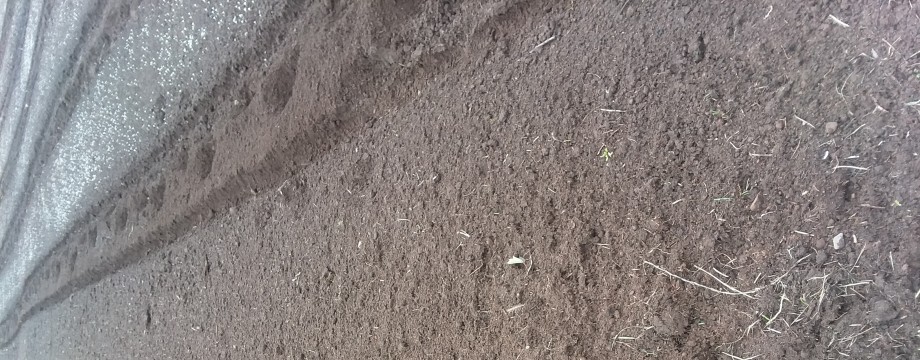 Evil (malus) and dark (fusca) seems to be a rather glum moniker for this lovely Pacific Northwest native. Commonly known as Pacific Crabapple. Even crabapple seems a poor autograph for such an ambrosial and faithful vernal season intermediary.
Evil (malus) and dark (fusca) seems to be a rather glum moniker for this lovely Pacific Northwest native. Commonly known as Pacific Crabapple. Even crabapple seems a poor autograph for such an ambrosial and faithful vernal season intermediary.
Always to be counted on to burst into bloom and perfume the air once spring is well under way but not yet fully mimicking midsummer days.
It has proved to be a sure phenological event to gage when to plant our squash and pumpkin seeds in the pasture. Though we still chose to put down floating row cover because we were getting some terrential downpours keeping the water level rather high in the pumpkin patch this year rendering the soils a little chillier than in other places in the higher gardens.
–
The frequent afternoon visitor grew up coming to this very homestead with his mother to meet up with Sam Sorenson and ride with him into the tradingpost at the Roy-Y. His advice and story telling was quickly taken as fact by Dirt and I, as he informed us he was Fred Guske who resided “on Guske Road of course.”
–
 Malus is the Latin name for the apple family and therefore Malus fusca can serve as a suitable root stock and this particular malus even more so, because it actually prefers the wet soggy soils we often have in this area.
Malus is the Latin name for the apple family and therefore Malus fusca can serve as a suitable root stock and this particular malus even more so, because it actually prefers the wet soggy soils we often have in this area.
 Upon a first glance and quick sniff, Malus fusca can be confused with another Pacific Northwest native, Philadephus lewisii. Yet a proper gaze and a deep, closed eye, nasal breath, quickly separates the two.
Upon a first glance and quick sniff, Malus fusca can be confused with another Pacific Northwest native, Philadephus lewisii. Yet a proper gaze and a deep, closed eye, nasal breath, quickly separates the two.
Philadephus lewisii, commonly known as Mock Orange is not fake anything. It is stunningly white, with a deep and quenching fragrance. It blooms just days behind Malus fusca during a warm spring, its buds are pristine white and when the buds unfurl they have only four petals rather than five.
 The fragrance of Malus in the damp lands is bright and lively, an interesting contrast to some of our other truly dark scents found there. But very different from the fragrance of our native dry ground loving Philadelphus which can be entirely heady on a good hot late spring day as it rises up to the second story window, intoxicating the breather and sure to cause daydreams and long flights of fancy, cured only by the reality of the day having passed and a motorsickle, with a weary teacher driving it, coming home.
The fragrance of Malus in the damp lands is bright and lively, an interesting contrast to some of our other truly dark scents found there. But very different from the fragrance of our native dry ground loving Philadelphus which can be entirely heady on a good hot late spring day as it rises up to the second story window, intoxicating the breather and sure to cause daydreams and long flights of fancy, cured only by the reality of the day having passed and a motorsickle, with a weary teacher driving it, coming home.
 Our Malus friend’s bark is rough and deeply fissured, separating into an intense weave and slub pattern.
Our Malus friend’s bark is rough and deeply fissured, separating into an intense weave and slub pattern.
 And the branches hold what an uniformed mind (like mine) sees as thorns but are really spurs from which come the flowers and then fruit. But unlike the fruiting buds on my friendlier more domesticated malus (Malus domestica in fact) in the orchard, these are hard and sharp so my confusion is understandable.
And the branches hold what an uniformed mind (like mine) sees as thorns but are really spurs from which come the flowers and then fruit. But unlike the fruiting buds on my friendlier more domesticated malus (Malus domestica in fact) in the orchard, these are hard and sharp so my confusion is understandable.
 The fragrance of Malus in the damp lands is bright and lively, an interesting contrast to some of our other truly dark scents found there. But very different from the fragrance of our native dry ground loving Philadelphus which can be entirely heady on a good hot late spring day as it rises up to the second story window, intoxicating the breather and sure to cause daydreams and long flights of fancy, cured only by the reality of the day having passed and a motorsickle, with a weary teacher driving it, coming home.
The fragrance of Malus in the damp lands is bright and lively, an interesting contrast to some of our other truly dark scents found there. But very different from the fragrance of our native dry ground loving Philadelphus which can be entirely heady on a good hot late spring day as it rises up to the second story window, intoxicating the breather and sure to cause daydreams and long flights of fancy, cured only by the reality of the day having passed and a motorsickle, with a weary teacher driving it, coming home. –
Besides the dream inducing fragrance and the four petals, our Philadephus friend differs from out Malus friend in trunk and branch.
 Our Malus friend’s bark is rough and deeply fissured, separating into an intense weave and slub pattern.
Our Malus friend’s bark is rough and deeply fissured, separating into an intense weave and slub pattern.
 And the branches hold what an uniformed mind (like mine) sees as thorns but are really spurs from which come the flowers and then fruit. But unlike the fruiting buds on my friendlier more domesticated malus (Malus domestica in fact) in the orchard, these are hard and sharp so my confusion is understandable.
And the branches hold what an uniformed mind (like mine) sees as thorns but are really spurs from which come the flowers and then fruit. But unlike the fruiting buds on my friendlier more domesticated malus (Malus domestica in fact) in the orchard, these are hard and sharp so my confusion is understandable.
 So I leave you this afternoon Dear Reader to go plant some corn, because my Malus fusca assures me, better than any weatherman, that my corn seed will not rot and so I need to get out and get it in the ground. But I leave you with one more image of Malus fusca, one I messed with (more than the usual light enhancing) on Photoshop. Can you guess what I did to it?
So I leave you this afternoon Dear Reader to go plant some corn, because my Malus fusca assures me, better than any weatherman, that my corn seed will not rot and so I need to get out and get it in the ground. But I leave you with one more image of Malus fusca, one I messed with (more than the usual light enhancing) on Photoshop. Can you guess what I did to it?
Have a terrific day and I’ll be seeing you bright and early tomorrow morning.
–
Oops, I nearly forgot, go see all sorts of other beautiful flowers all around the world that God designed at Today’s_Flowers.




